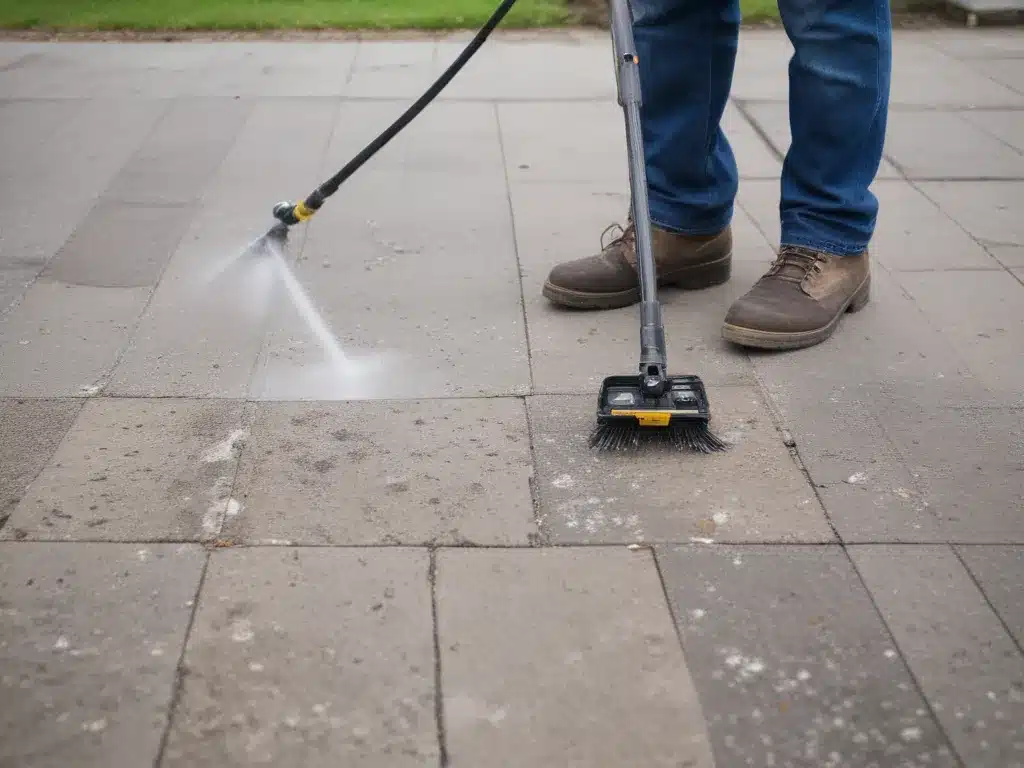Introduction
Pressure washing has become a popular and effective method for cleaning various surfaces, from concrete driveways to building facades. However, the power of high-pressure cleaners can also pose a risk of damage if not used properly. In this article, I aim to provide a comprehensive understanding of when power washing becomes damaging and how to mitigate those risks.
Understanding Pressure Washing
Pressure washing involves using a high-pressure water stream to remove dirt, grime, and other unwanted materials from surfaces. The water is typically delivered through a specialized machine that generates pressures ranging from 1,000 to 5,000 PSI (pounds per square inch). The combination of high pressure and water flow rate makes pressure washing an efficient cleaning method for tough jobs.
Factors Contributing to Potential Damage
Several factors can contribute to the potential for damage during pressure washing:
- Pressure Level: Higher pressure levels can cause more damage, especially on delicate surfaces like wood, paint, or certain types of siding.
- Water Flow Rate: A higher water flow rate can increase the force and impact on the surface being cleaned.
- Nozzle Type: Different nozzle types concentrate the water stream differently, with some creating more intense, focused streams that can be more damaging.
- Distance from the Surface: Holding the pressure washer nozzle too close to the surface can increase the risk of damage.
- Technique: Improper techniques, such as keeping the nozzle pointed at one spot for too long or moving it too slowly, can lead to surface erosion or damage.
When Does Power Washing Become Damaging?
Power washing can become damaging under the following circumstances:
1. Delicate Surfaces
Surfaces like wood, painted surfaces, or certain types of siding can be easily damaged by high-pressure water streams. The force of the water can etch, peel, or strip the surface, leading to permanent damage. In such cases, lower pressure settings or alternative cleaning methods may be more appropriate.
2. Incorrect Pressure Settings
Using excessively high pressure settings for a particular surface can result in damage. Different surfaces have varying levels of durability, and it’s essential to match the pressure setting to the surface type. For example, using a pressure setting intended for concrete on a wooden deck could cause significant damage.
3. Improper Technique
Even with the right pressure setting, improper technique can lead to damage. Holding the nozzle too close to the surface, keeping it in one spot for too long, or moving it too slowly can cause erosion, etching, or other forms of surface damage.
4. Sensitive Areas
Certain areas, such as around windows, doors, or delicate trim, may be more susceptible to damage from high-pressure water streams. Extra caution should be taken when cleaning these areas, or they should be avoided altogether.
5. Environmental Conditions
Environmental conditions like wind can cause the water stream to drift or bounce, potentially resulting in unintended damage to nearby surfaces or objects. Additionally, freezing temperatures can make some surfaces more brittle and prone to cracking or chipping when exposed to high-pressure water.
Mitigating the Risk of Damage
To mitigate the risk of damage during power washing, consider the following best practices:
- Use the Appropriate Pressure Setting: Match the pressure setting to the surface type and its durability. Start with a lower pressure setting and gradually increase it if needed.
- Maintain a Safe Distance: Keep the nozzle at a safe distance from the surface, typically around 6-12 inches, depending on the pressure level and surface type.
- Use the Correct Nozzle: Different nozzle types are designed for specific tasks. Choose a nozzle that provides the necessary cleaning power without excessive concentration or force.
- Move the Nozzle Steadily: Avoid keeping the nozzle pointed at one spot for too long, and move it steadily across the surface to prevent excessive erosion.
- Protect Sensitive Areas: Cover or mask off sensitive areas like windows, doors, or delicate trim to prevent accidental damage.
- Consider Surface Preparation: In some cases, it may be necessary to prepare the surface before power washing, such as by applying a protective coating or removing loose materials.
- Hire Professionals: If you’re unsure about the appropriate techniques or settings, consider hiring professional power washing services with the necessary expertise and equipment.
Case Study: Restoring a Historic Building Facade
To illustrate the importance of proper power washing techniques, let’s examine a real-life case study involving the restoration of a historic building facade in London.
The Challenge
The building, constructed in the late 19th century, had accumulated years of grime, pollution, and discoloration on its intricate stone facade. The goal was to restore the original beauty and luster of the stonework without causing any damage to the delicate carvings and architectural details.
The Approach
After careful assessment, the team decided to use a combination of low-pressure water washing and specialized cleaning solutions. They started with a low-pressure water rinse to remove loose debris, followed by the application of a gentle cleaning solution specifically formulated for historic masonry. This solution was left to dwell for a controlled period before being rinsed off with low-pressure water.
The Results
The meticulous approach paid off, revealing the stunning detail and warm tones of the original stonework. The low-pressure water washing and gentle cleaning solutions effectively removed the accumulated grime without causing any damage to the delicate carvings or eroding the surface. The restored facade not only enhanced the building’s aesthetic appeal but also preserved its historic integrity for years to come.
Conclusion
Power washing can be an effective and efficient cleaning method when used correctly. However, it’s crucial to understand the potential for damage and take appropriate precautions. By considering factors like pressure levels, nozzle types, surface conditions, and proper techniques, you can harness the power of pressure washing while minimizing the risk of damage. Remember, when in doubt, it’s always better to err on the side of caution or seek professional assistance to ensure the safety and longevity of your surfaces.







